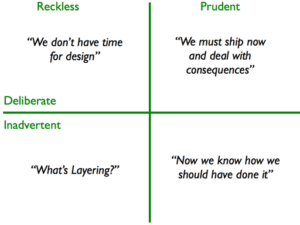IT OPERATIONAL REVIEWS DEFINED
An IT operational review is an in-depth and objective review of an entire organisation or a specific segment of that organisation. It can be used to identify and address existing concerns within your company such as communication issues between departments, problems with customer relations, operating procedures, lack of profitability issues, and other factors that affect the stability of the business.
Operational reviews allow the organisation members to evaluate how well they are performing, given that they perform appropriately according to the procedures set by them, allocating their resources properly, and performing such tasks within time frame set and using cost-effective measures. More importantly, it also shows your company how well it is prepared to meet future challenges.
Simply put, the goals of an operational review are to increase revenue, improve market share, and reduce cost.
THE BENEFITS OF AN IT OPERATIONAL REVIEW
The main objective of IT operational reviews is to help organisations like yours learn how to deal with and address issues, instead of simply reacting to the challenges brought about by growth and change.
In such review, the information provided is practical from both a financial and operational perspective. Using these data, the management can then come up with recommendations, which are not only realistic, but more importantly, can help the organisation achieve its goals. The review recognises the extent to which your internal controls actually work, and enables you to identify and understand your strengths, weaknesses, opportunities and threats
To be more specific, let’s list down the ways wherein an effective operational review can contribute to the success of the organisation.
The review process can:
– assess compliance within your own organisational objectives, policies and procedures;
– evaluate specific company operations independently and objectively;
– give an impartial assessment regarding the effectiveness of an organisation’s control systems;
– identify the appropriate standards for quantifying achievement of organisational objectives;
– evaluate the reliability and value of the company?s management data and reports;
– pinpoint problem areas and their underlying causes;
– give rise to opportunities that may increase profit, augment revenue, and reduce costs without sacrificing the quality of the product or service.
Thus, each operational review conducted is unique, and can be holistic or specific to the activities of one department.
Our Operational Efficiencies cover the entire spectrum:
- What to buy
- Optimising what you’ve already bought e.g. underutilised servers, duplicate processes, poorly managed bandwidths
- Making your team comfortable with the changes
- Instilling Best Practices
UNCOVER WAYS TO DRIVE YOUR PROFITS UP, THROUGH OPERATIONAL REVIEWS
- Align IT Investments With Organisation Goals
- Eliminate Complexities In Your IT System
- Reduce Cost and Improve Productivity
- Enhance and Streamline IT Processes
